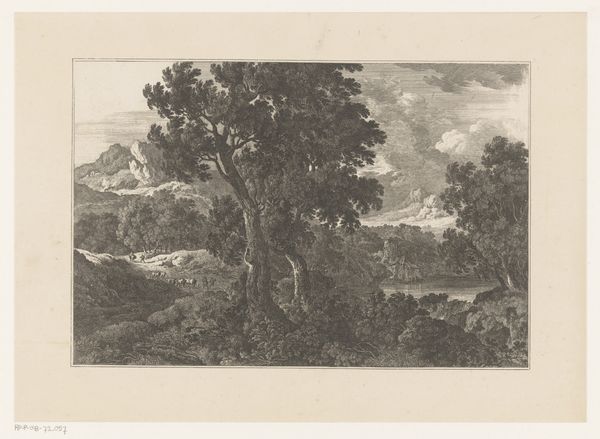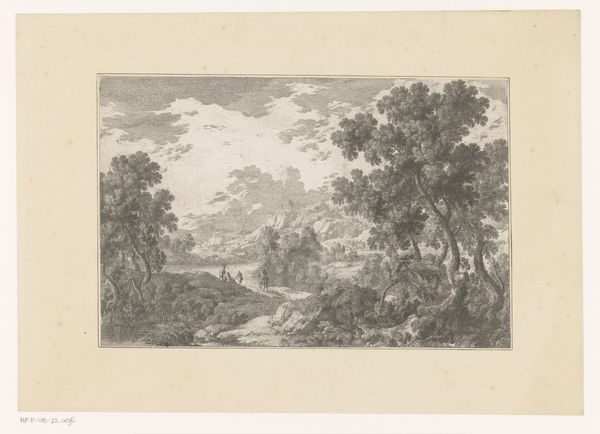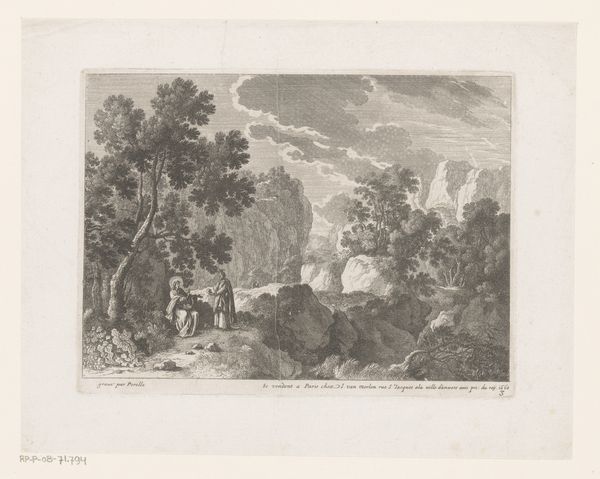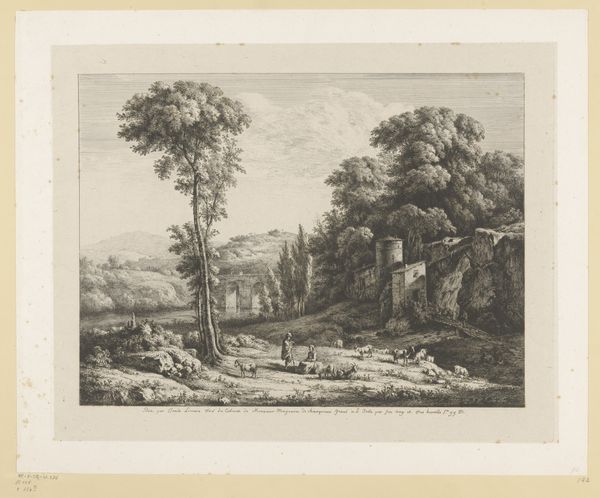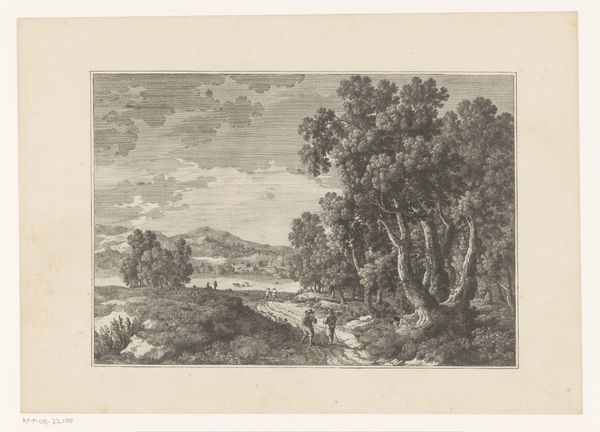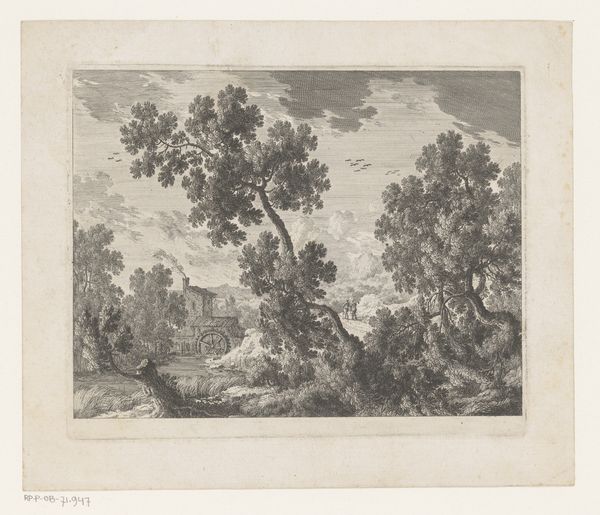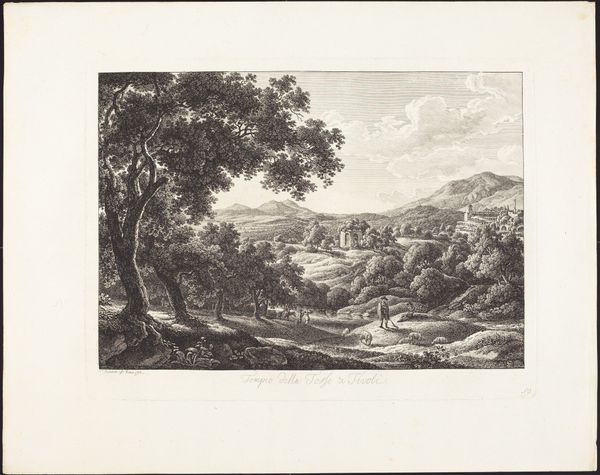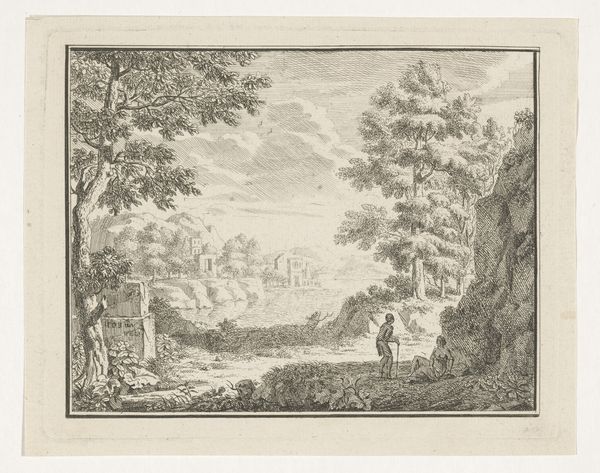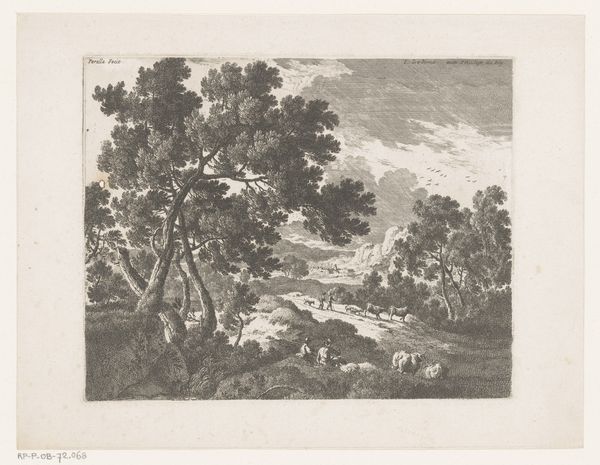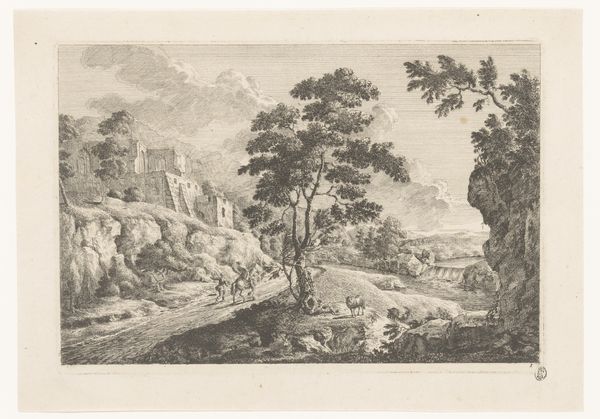
print, paper, engraving
#
baroque
# print
#
landscape
#
paper
#
line
#
history-painting
#
engraving
Dimensions: height 219 mm, width 320 mm
Copyright: Rijks Museum: Open Domain
Curator: Before us hangs Nicolas Perelle's "Landschap met knielende figuur bij een ezel", an engraving on paper that likely dates to somewhere between 1613 and 1695. The artwork resides here at the Rijksmuseum. Editor: My initial impression is of balanced tension. The sharp, precise lines used to create the lush landscape versus the soft, almost hazy sky gives it a very intriguing compositional dichotomy. Curator: Indeed, the precision contributes to its Baroque grandeur, which, paradoxically, clashes a little with the intimate scene of the kneeling figure and donkey in the foreground. Do you think there's a narrative at play that balances that tension? Editor: Well, consider the composition itself. The tree on the left mirrors the cliff on the right, each echoing the other in size and shape. This parallelism creates a sense of equilibrium that permeates the image, despite the sharp textural shifts and contrast between shadow and light. Curator: But what of the donkey? The iconography of a humble creature in such proximity to a figure who's possibly kneeling could suggest the burden carried through life, or even perhaps be alluding to some classical or biblical motif, wouldn't you agree? Editor: Potentially. However, I think there’s value in understanding how Perelle’s lines and shades create varying visual weight across the surface of the picture. How they balance and offset each other to define the perspective. Look closely— see how the architecture nestles against the cliff face. It is both emphasized, and made subtle, by its construction. Curator: Ah, yes. Perhaps Perelle sought to create more than a pleasing image—maybe it's a meditation on humankind's place within the landscape, burdened yet blessed? The ruins, like the donkey and the figure, could be more than scenic details. They seem integral to the historical consciousness imbued in the image. Editor: Whether we interpret the scene historically or just consider it as a striking landscape print, its subtle complexities definitely continue to capture one's gaze, centuries after its creation. Curator: I think that our exchange has emphasized the image's cultural resonance. Perhaps, that has something to say about art's continuing power as a means of contemplating shared human experience, in ways that might both delight and disturb.
Comments
No comments
Be the first to comment and join the conversation on the ultimate creative platform.


